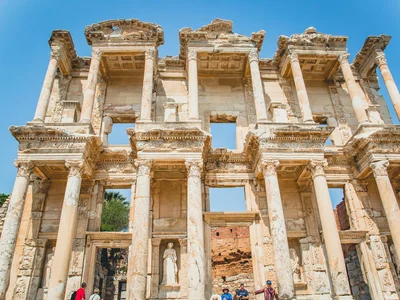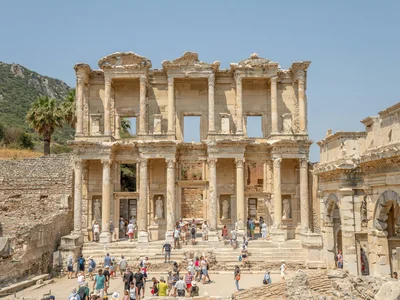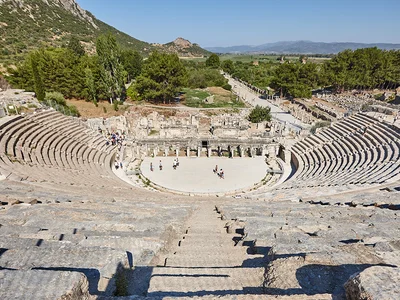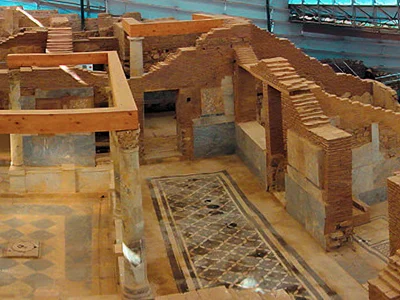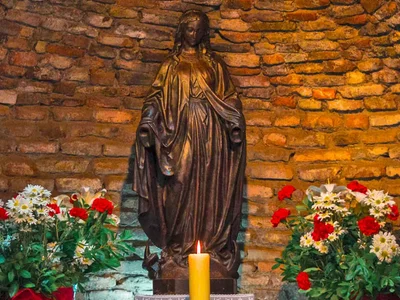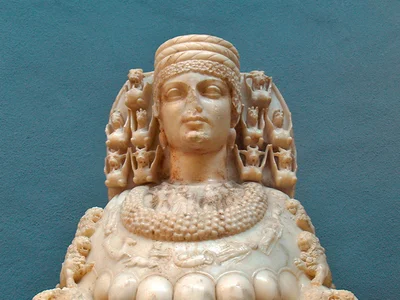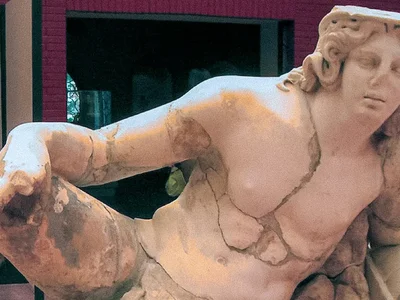Great Theatre of Ephesus
The grand theater of Ephesus stands as an impeccably preserved and truly remarkable architectural marvel. Constructed predominantly from marble, this imposing structure boasts a width spanning 145 meters, with its seating area once accommodating up to 24,000 spectators.
Originating in Hellenistic times, the theater underwent significant expansion during the Roman era under Emperor Claudius (41–54 AD). Notable enhancements included the construction of a two-storey stage (skene) during the reign of Emperor Nero (54–68 AD), with a third storey added later in the mid-2nd century. The completion of its construction occurred under Emperor Trajan (98–117 AD). Notably, an aqueduct was engineered in the early 2nd century AD to supply water to Ephesus, with its trajectory necessitating a channel through the upper seats for the Trajan nymphaeum.
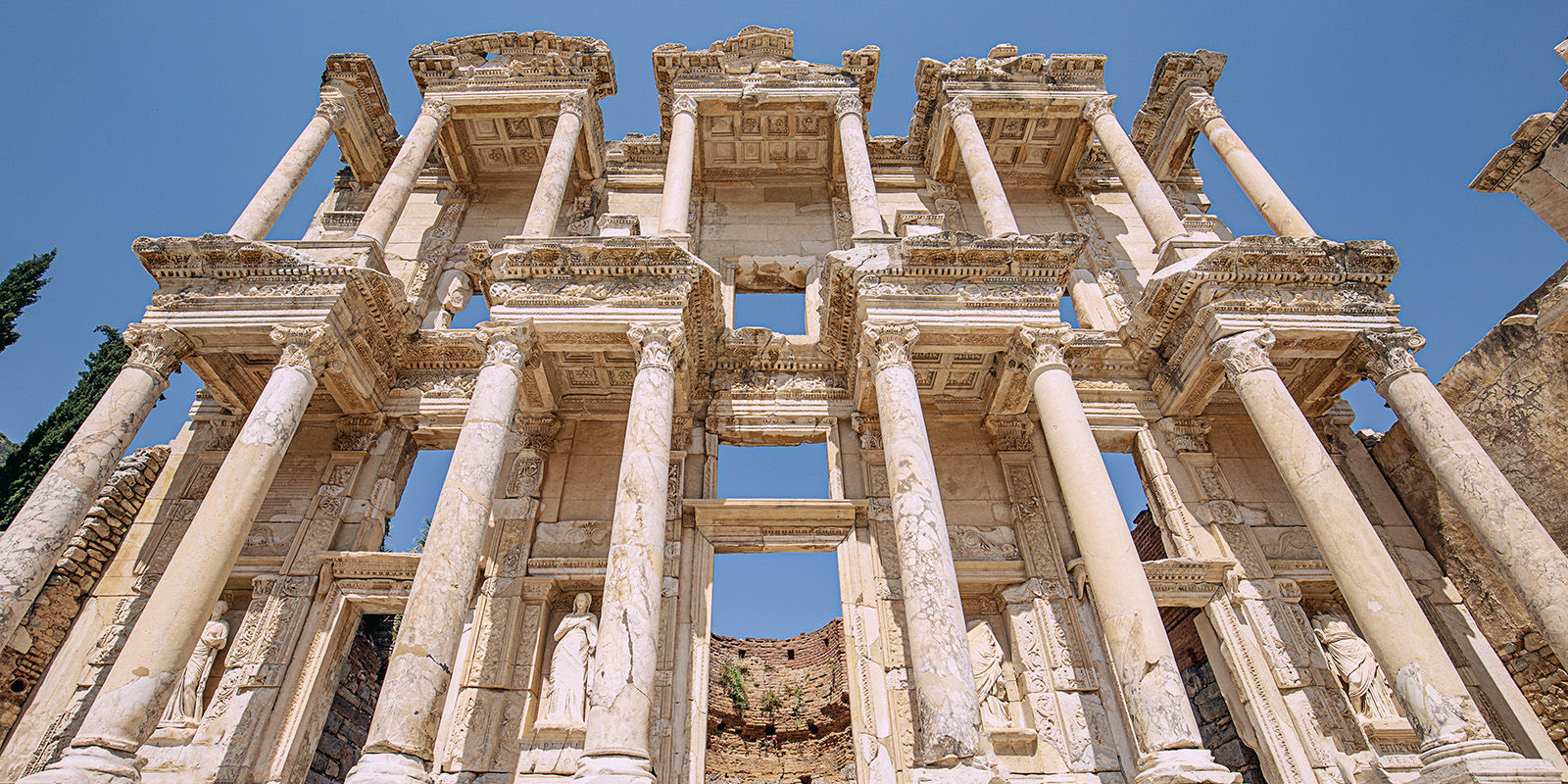
This theater, a blend of Hellenistic and Roman design, underwent seismic events and subsequent repairs throughout its history. While often associated with St. Paul's visit to Ephesus, historical evidence suggests he did not preach there during the unrest.
Excavations began before WWI, with extensive restoration efforts undertaken later. The theater remains a testament to Ephesus' rich cultural heritage, attracting visitors from around the world.

